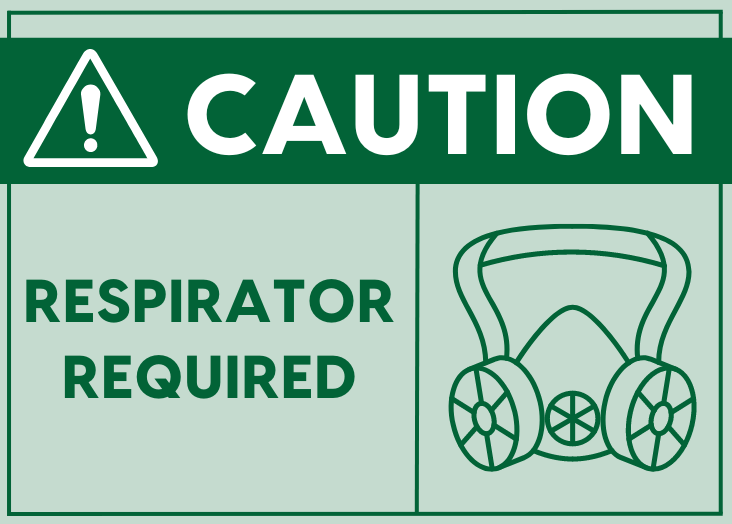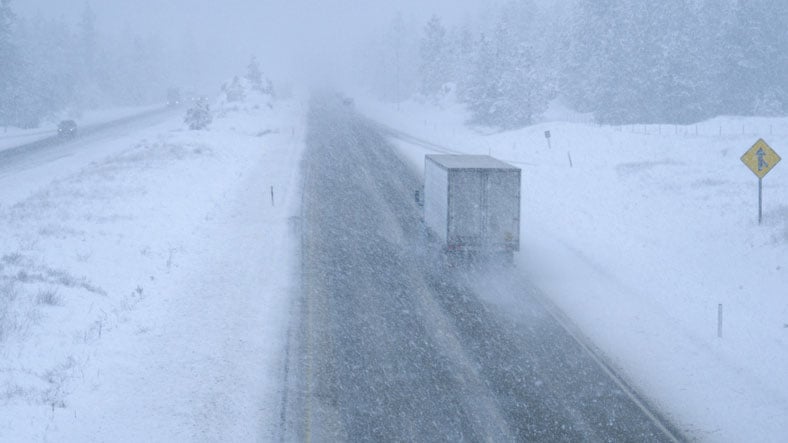Take a Deep Breath—and Maintain Respiratory Protection Compliance
Respiratory protection was the fourth of OSHA’s top 10 most frequently cited standards. We continue our analysis by discussing these guidelines.
Respiratory protection is more important than ever. Those employers that don’t protect their employees from airborne hazards in the workplace face non-compliance, sick workers, and loss of brand image. Unfortunately, in 2022, respiratory protection was once again one of the top five most frequently cited workplace safety standards of the Occupational Safety and Health Administration (OSHA).
On the heels of the COVID-19 pandemic, air quality concerns from recent wildfires, and New York state’s recent respirator/mask recall, scrutiny of respiratory protection is especially heightened. In fact, the OSHA Respiratory Protection safety standard is one of the most frequently violated, year after year. For OSHA fiscal year 2021, it was the second most violated. For OSHA fiscal year 2022, 2,430 violations of this standard were reported.
Respiratory Protection Gaps
Failure to protect workers from respiratory hazards can result in downsides for human health. Routine operations release toxins in the air, in the form of dusts, smokes, gases, and more—which can cause cancer, lung diseases, or even death in certain circumstances. In low oxygen circumstances, without a respirator, workers may be unable to breathe. Indeed, respiratory protection is often truly a matter of survival.
On top of this, violation of this OSHA standard can be costly for your organization. Facilities found in violation of the Respiratory Protection standard face fines of up to $15,625 per violation—even more if the violation is severe, willful, or repeated. To protect worker well-being and your organizational bottom line, it is important to review OSHA’s Respiratory Protection safety standard and understand how to remain in compliance with it.
Workplace Respiratory Protection Regulations
OSHA respiratory protection guidelines are expansive and thorough, and largely deal with respirator selection, use, and maintenance. To help ensure you are keeping your employees safe, we’ll review some OSHA regulations as it applies to respiratory protection:
- Respiratory Protection Programs (RPPs) (29 CFR 1910.134(c)):
“... the employer [is required] to develop and implement a written respiratory protection program with required worksite-specific procedures and elements for required respirator use.”
This broader guideline of the Respiratory Protection standard is crucial to the success of the rest of the guidelines. The key to succeed is to actually write down your RPP, to ensure the same steps are followed each time. A written plan also enables you to keep track of every detail of respiratory protection. Among other components, an RPP should include:
- Respirator standard operating procedures (SOPs)
- Medical evaluation steps
- Fit testing guidelines
- Respirator cleaning schedules
- Employee training guidelines on respiratory hazards
It should also outline when respirators are not required. There are a number of challenges to full RPP implementation, and key steps can make or break your program. Employers need to learn what is required before using a respirator.
- Appropriate respirator selection (29 CFR 1910.134(d)(1)(i)):
“Each employer shall select and provide an appropriate respirator based on the respiratory hazard(s) to which the worker is exposed and workplace and user factors that affect respirator performance and reliability.”
Before choosing a respirator, employers should evaluate all airborne hazards to respiratory health. These should be kept in mind when selecting the appropriate respirator. All respirator candidates should be National Institute for Occupational Safety & Health (NIOSH) certified and should be suitable for the type of hazard. Additionally, the mask’s maximum use concentration (MUC) must be higher than the concentration of the contaminants the employee is likely to be exposed to. Finally, multiple models and sizes should be available to ensure an appropriately fitting respirator for each person. - Fit testing (29 CFR 1910.134(f)):
“… before an employee may be required to use any respirator with a negative or positive pressure tight-fitting facepiece, the employee must be fit tested with the same make, model, style, and size of respirator that will be used.”
Fit testing must occur before initial use of the respirator, whenever a different respirator is used, and annually. It must also occur when an employee’s bodily change may affect the respirator’s fit, including scarring, dental or cosmetic surgery, or weight gain. All fit tests must be performed with an appropriate, OSHA-accepted protocol, such as qualitative fit testing (QLFT) or quantitative fit testing (QNTF). - Employee training (29 CFR 1910.134(k)):
“… the employer [needs to] provide effective training to employees who are required to use respirators.”
Employees must take a number of steps before they use respirators—and it is the job of the employer to make sure the worker is properly trained in these steps. The employer should make sure workers know:
- Why the respirator is important
- How to use it properly
- Respirator usage limitations
- How to don and use regular and emergency respirators
- What their rights are within the workplace with regards to respiratory protection
Remember: any change to workplace RPP renders previous training obsolete. Training should be repeated annually—or when the old training becomes outdated.
- Respirator maintenance and cleaning (standard 1910.134(h)):
“… the employer [is required to] provide for the cleaning and disinfecting, storage, inspection, and repair of respirators used by employees.”
All employees must have access to a respirator that is sanitary and in good working order. Well-maintained respirators are crucial to effectively protect human health. Improper disinfection or poor storage can allow moisture, dusts, chemicals, and more to diminish the integrity of the mask—its ability to protect the wearer. Masks should be disinfected as often as necessary to maintain integrity, and stored so they are protected from damage. They should be frequently inspected for signs of wear and tear.
Steps to Respiratory Protection Compliance
The list above is not exhaustive—there are other guidelines and regulations you must follow to keep your facility compliant with OSHA Respiratory Protection standards. Some of the initial steps toward compliance are:
- Conduct operational review: Thoroughly review both normal day-to-day operations and any potential emergency situations that may arise. Note any areas where you may be required to provide respiratory protection, as well as the type of potential contaminants and their likely quantities. This will be the basis for building your RPP.
- Analyze respirator options: Based on your operations review, analyze which respirators are most appropriate for the potential respiratory hazards to which your workers may be exposed. There are multiple respirator types, and each one is designed for use in different circumstances. The specific models you will need depend on the amount and type of respiratory hazards your workers may face. An atmosphere-supplying respirator (ASR), like a self-contained breathing apparatus (SCBA) or a supplied-air respirator (SAR), for example, will directly provide oxygen to the wearer. On the other hand, an air-purifying respirator (APR) such as a filtering facepiece respirator (FFR) or an elastomeric half mask respirator (EHMR) only filter external air contaminants. In the same way, an EHMR will filter out more contaminants than an FFR can.
- Invest in training: Employee training can make or break an RPP—it doesn’t matter how exhaustive your RPP is if your employees don’t understand it and all associated requirements. Investing in a training program will help ensure your employees are positioned for respirator usage success.
- Partner for fit testing: As a vital part of respiratory protection, fit testing is also one that comes with its own rules, regulations, and complex steps. Managers, without expert assistance, will find it difficult to understand the respiratory protection guidelines. Securing a partner, however, can take the burden of complex fit testing off you—and help you focus instead on large-scale respiratory protection compliance.
Respiratory protection demands complete commitment, vigilance, resources, and savvy. Noncompliance can result in employee injury or death, as well as workplace demoralization—and hefty fines. Employee respiratory safety is in your hands—luckily, Triumvirate Environmental can help. Our team of experts can make sure you have everything you need, not only in implementing a compliant RPP program, but for fit testing and regulatory compliance needs as well. Contact us today to learn more about our respiratory protection and industrial hygiene offerings.






